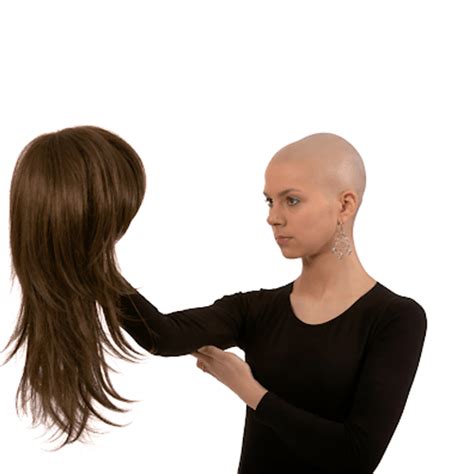The Impact of Cancer on Hair Loss

Cancer treatment, particularly chemotherapy and radiation, often leads to hair loss, triggering a profound emotional impact. For many cancer sufferers, losing their hair signifies a loss of identity, self-esteem, and a sense of control.
According to the American Cancer Society, approximately 65% of patients undergoing chemotherapy experience hair loss. Moreover, hair loss can occur within a few days or weeks of starting treatment and can range from thinning to complete baldness.
Empowering Confidence with Wigs
Wigs offer a powerful tool for cancer sufferers to regain confidence, cope with hair loss, and reclaim a sense of normalcy. By providing a natural-looking replacement for lost hair, wigs can alleviate the emotional burden associated with hair loss and empower individuals to regain a positive self-image.
Types of Wigs
There are numerous types of wigs available to cancer sufferers, each with its own unique characteristics:
- Synthetic wigs: Made from artificial fibers, synthetic wigs are generally more affordable and require less maintenance than human hair wigs. They are ideal for daily wear and come in a wide range of styles, colors, and textures.
- Human hair wigs: Crafted from the hair of humans, human hair wigs provide a natural look and feel. They are more expensive than synthetic wigs but offer a higher level of comfort and versatility.
- Custom-made wigs: Designed specifically for an individual’s head shape and hair type, custom-made wigs offer the most natural and personalized fit. They are ideal for those seeking a wig that is indistinguishable from their own hair.
Choosing the Right Wig
Selecting the right wig for cancer sufferers involves considering factors such as:
- Head shape: Determining the shape of your head (round, oval, square, etc.) will help ensure a comfortable and secure fit.
- Hair texture: Matching the texture of your natural hair (straight, curly, wavy) will create a more seamless transition.
- Color: Selecting a wig that complements your skin tone and facial features is crucial for a natural look.
- Personal style: Choosing a wig that meets your personal preferences and reflects your individual style will boost confidence.
Benefits of Wearing Wigs for Cancer Sufferers
- Improved self-esteem: Wigs can help restore a sense of normalcy and boost confidence, empowering individuals to feel better about themselves.
- Reduced anxiety: By concealing hair loss, wigs can alleviate the anxiety and embarrassment often associated with it.
- Enhanced social interaction: Wigs facilitate social interaction by creating a more natural appearance, enabling cancer sufferers to engage more confidently.
- Protection from the elements: Wigs provide protection from the sun, wind, and cold, which can be especially important during treatment.
Common Mistakes to Avoid
When choosing and wearing a wig for cancer treatment, it is essential to avoid common mistakes:
- Wearing a wig that is too tight or too loose: A poorly fitted wig can cause discomfort and hair loss.
- Not washing your wig regularly: Failing to clean your wig can result in a buildup of bacteria and odors.
- Using harsh chemicals on your wig: Harsh chemicals can damage the fibers and alter the color of the wig.
- Overstyling your wig: Excessive use of heat styling tools can damage the wig and shorten its lifespan.
Care and Maintenance of Wigs
Proper care and maintenance are essential to prolong the life of wigs for cancer sufferers:
- Washing: Wash your wig every 6-8 wears or according to the manufacturer’s instructions. Use a gentle shampoo and conditioner designed for wigs.
- Styling: Use heat styling tools sparingly and avoid using high temperatures.
- Storage: Store your wig on a wig stand or in a box when not in use to maintain its shape.
- Professional maintenance: Visit a wig stylist regularly for professional cleaning, conditioning, and styling to ensure optimal performance.
Conclusion
Wigs play a vital role in empowering cancer sufferers to regain confidence, cope with hair loss, and enhance their well-being. By choosing the right wig and following proper care and maintenance practices, individuals can enjoy the benefits of wigs throughout their cancer journey.
